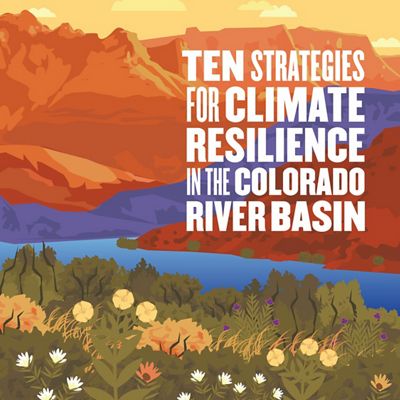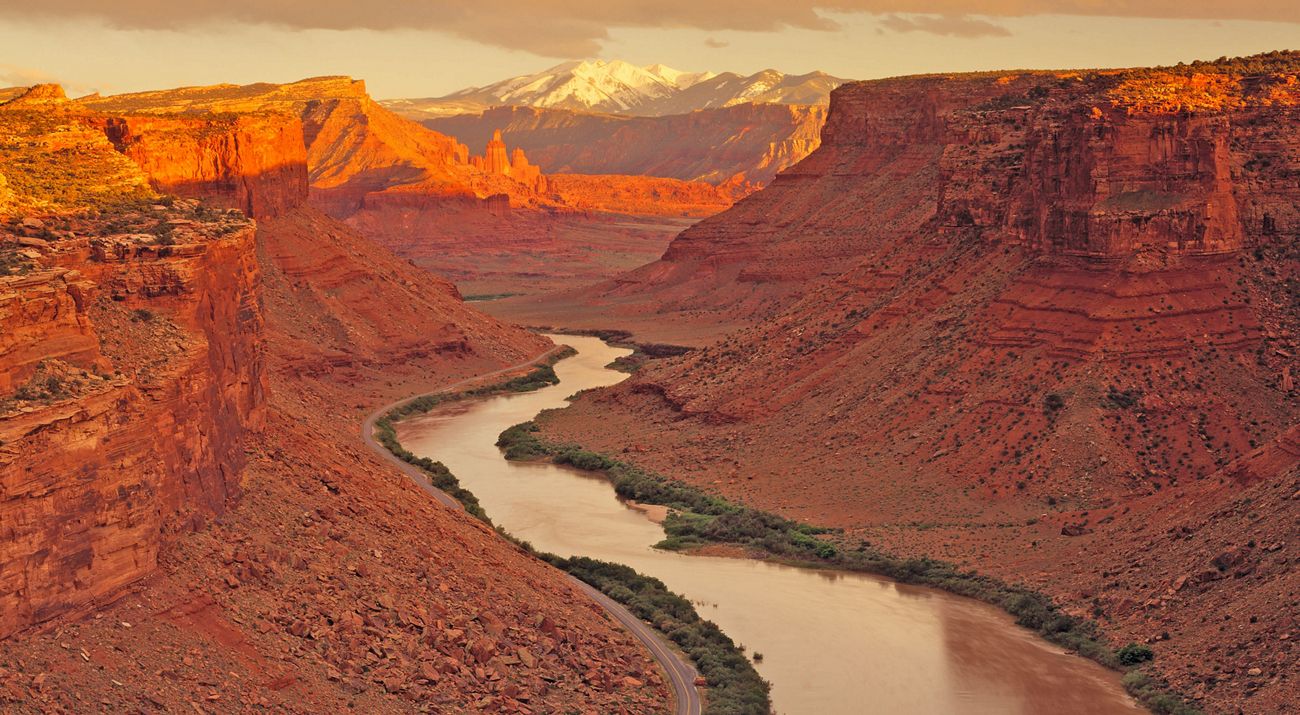Working Together to Thrive in a Hotter, Drier Future
Ten Strategies for Climate Resilience in the Colorado River Basin
The Colorado River Basin, which encompasses seven states and two countries, is struggling through an extreme drought and the past year has been the driest or second driest in most Southwestern states since record-keeping began in 1895. It is being called a “mega-drought” because the last 22-year period was the driest in centuries in the Basin. Climate change plays a role, compounding an already bad situation through rising temperatures and changes in precipitation patterns.
Many scientists say that due to climate change, the Colorado River Basin will become a permanently hotter and drier place. Climate change is already hitting the Basin hard as temperatures have risen more precipitously in this geography than anywhere else in the lower 48 United States. The average flow of the Colorado River has already declined nearly 20 percent over the past century, with half of that attributable to rising temperatures. Portions of the Upper Basin have warmed more than 2 degrees Celsius -- double the global average – and models predict that by 2050 temperatures in the Basin will rise another 2-5 degrees Fahrenheit. Scientists estimate this could reduce river flows by another 10 to even 40%.
The Nature Conservancy has been actively engaging throughout the Colorado River Basin for more than 13 years in support of the Colorado River and all who depend on it. We work to restore and protect healthy river flows and conserve the Colorado River system’s imperiled wildlife and ecosystems. We collaborate with farmers, ranchers, municipalities, states, Tribal Nations, and many other partners to find solutions and give nature a voice.
In the face of climate change, TNC is focusing on new strategies to improve overall climate and drought resilience in the Basin. These strategies are explored in a new report developed by a broad coalition including The Nature Conservancy: Ten Strategies for Climate Resilience in the Colorado River Basin. Currently TNC is diving deep into testing some of these ideas on the ground, including improving forest management practices, identifying agricultural practices that enhance soil health, and enahncing natural infrastructure to enhance water retention and aquifer recharge.
The Ten Strategies report can also serve as a guide for policymakers to identify new priorities and develop programs and project plans to build drought and climate resilience in the Colorado River Basin.
In order to really meet our program goals of keeping more water in the river at the right times to benefit both people and nature, we must think holistically about building drought resilience as we face a hotter and drier future. This new suite of projects will help us build on our previous work as we scale our efforts to make a bigger difference in a shorter amount of time.

